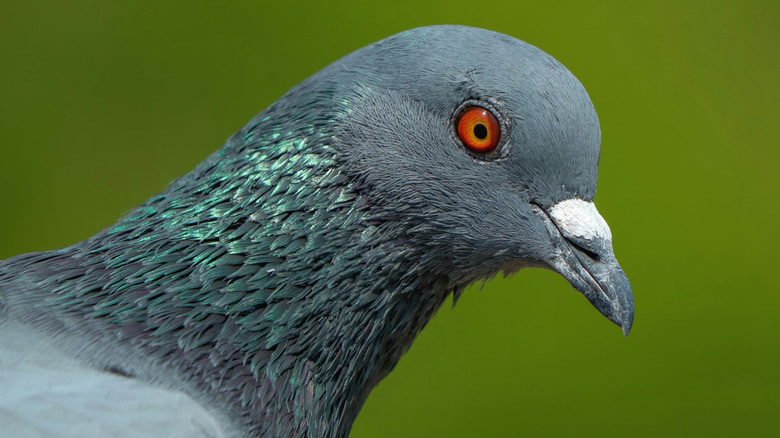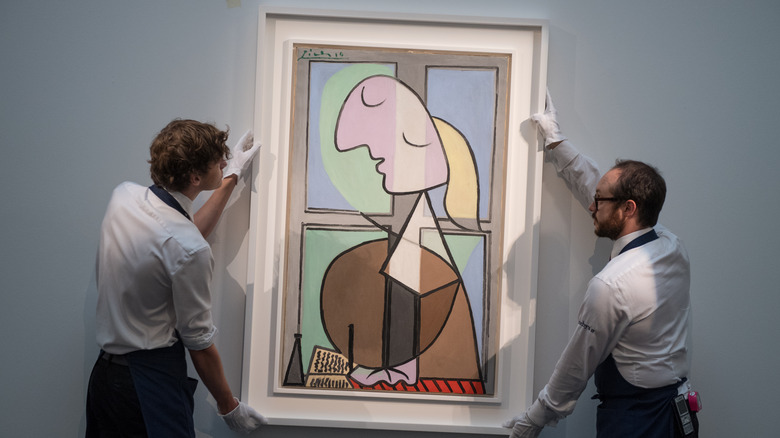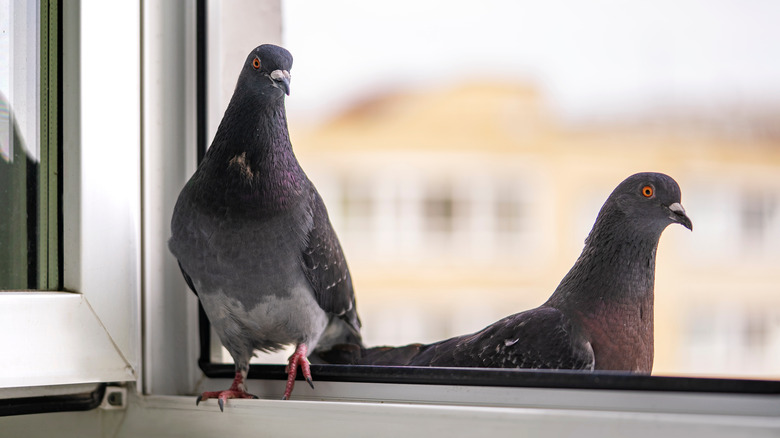The Very Unusual Skill Pigeons In Japan Have Mastered
Back in the 1800s, pigeon-breeding was a hobby practiced by many people. One of the most ardent pigeon fans of the time was the famous naturalist Charles Darwin, according to Mental Floss. He was a devout member of many pigeon clubs in London, and also owned his own group of birds. Alongside writing "The Evolution of Species," Darwin wrote another book with plenty of information about his feathered friend called "The Variation of Animals and Plants Under Domestication."
Pigeons might seem, well, pigeon-headed, but they're actually quite intelligent. In one 2017 study, researchers found pigeons can understand space and time like humans and primates (via Current Biology). They have the wits to find their way home from up to 1,300 miles away and have been used as carrier messengers since ancient Greece, as Mental Floss notes. But, one unusual skill a group of pigeons mastered in a Japanese laboratory goes above and beyond their other talents, and may one day give art critics a run for their money.
Not so bird-brained
When you go to a museum, you can probably tell the difference between a painting done by Pablo Picasso and one done by Claude Monet. Picasso's cubist style, although it varies tremendously across eras, is surreal and a little disorienting, while Claude Monet's impressionist dreamy landscapes have a whimsical feel.
In 1995, Japanese scientists Shigeru Watanabe, Junko Sakamoto, and Masumi Wakita from Keio University decided to test the limits of pigeon intelligence with a new experiment to see if the pigeons could also tell the difference between the two artists. The experiment consisted of showing paintings from the two artists to pigeons, and rewarding them with treats when they selected the right name for the right painting. Over time, the pigeons learned the two styles and were able to distinguish between them on their own — even for works that they had never seen before (via the Journal of the Experimental Analysis of Behavior).
Now they're art critics
The pigeons trained by the Japanese scientists also learned to label impressionist and cubist paintings of other artists — like Cézanne, Georges Braque, and Renoir — based on what they'd learned from Picasso and Monet, as NewScientist reveals. The researchers even found that the birds could distinguish between the two styles when images were blurred or portrayed in black and white, indicating it wasn't just the bold colors of cubism or the fuzzy brushstrokes of impressionism that they were noting.
In another 2009 experiment by the same scientists, pigeons were shown paintings made by elementary school students and trained to "grade" them based on whether the paintings were good or bad. Each artwork had already been graded by their teacher with good paintings receiving and A and bad paintings getting Cs and Ds. Eventually, when presented with new works, the pigeons were able to determine which paintings were worthy of hanging up in the museum and which should stay in the cupboard. Watanabe, Sakamoto, and Wakita even won an Ig Nobel Prize for their initial work in 1995 (via NewScientist).


